Georgia Tech now owns an interplanetary “Ramblin’ Wreck” — a briefcase-sized spacecraft orbiting the sun, capping a student-led mission in the cosmos.
(text and background only visible when logged in)
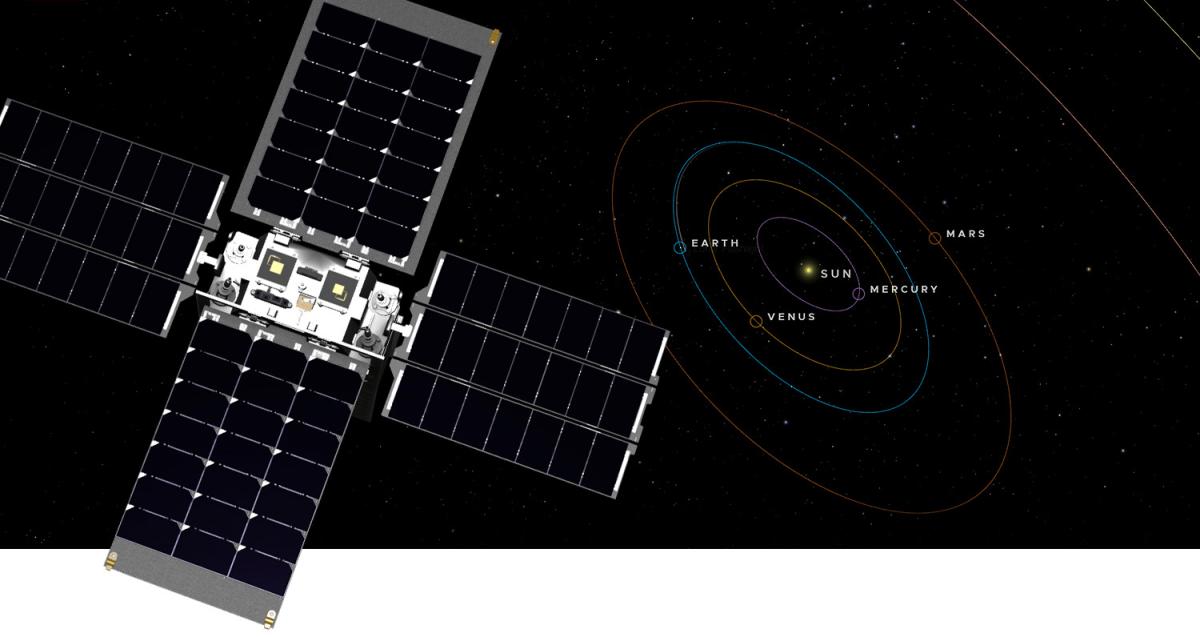
Right now, approximately 3.7 million miles from Earth, a small spacecraft the size of a briefcase is racing away from the planet by about 40,000 miles every day. And each day, sometimes twice, a team of 10 Georgia Tech undergraduate students communicate with it to monitor its health, respond to anomalies, and use its instruments for scientific studies.
Not only are they controlling the sun-circling satellite, but they also own it. NASA’s Jet Propulsion Laboratory (JPL) in Southern California has given Lunar Flashlight to Georgia Tech, making it the only higher education institution in full control of an interplanetary spacecraft. The designation is typically reserved for NASA or foreign governments.
“It’s really crazy. I didn’t imagine as an undergraduate that I would be talking to a satellite, let alone leading a team of 10 of my peers,” said Micah Pledger, an aerospace engineering student serving as missions operations lead. “Our team learns so much every day.”
The transfer of ownership, and its rare opportunity for the team, is the latest unexpected step in a series of celebrations, uncertainties, disappointments, and successes that have consumed a small lab near Tech Tower throughout the last year.
Instead of owning Lunar Flashlight, the students planned to control it, on behalf of JPL, around the moon this year in a search for signs of frozen water on the lunar surface.
But things didn’t go as planned after launch last December. Lunar Flashlight never made it into orbit around the moon despite months of troubleshooting. However, neither Georgia Tech nor JPL is calling the NASA mission a failure. It’s deemed a success for creating new technologies that will advance future space exploration.
It also gave the students the kind of experience no classroom project could ever approximate.
Propulsion Frustration
Lunar Flashlight’s liftoff from Kennedy Space Center last December should have set in motion a series of well-planned actions Georgia Tech students had choreographed in their role as mission control. But three days after launch, the team discovered one of the spacecraft’s four thrusters wasn’t working correctly.
A second thruster was found to be underperforming about a week later. Georgia Tech and JPL figured the likely cause was debris from the propulsion system that had broken loose, clogging the fuel lines and restricting propellant flow to the thrusters.
The anomalies weren’t ideal, but the student operators didn’t consider them mission-fatal. The team brainstormed new ways to control the spacecraft and pitched ideas daily to JPL.

Lunar Flashlight team members (left to right): Jud Ready, Robert Lammens, Mason Starr, Graham Jordan, and Glenn Lightsey.
They tried clearing the lines by increasing fuel pump pressure far beyond the propulsion system’s designed capacity. They attempted to fire the thrusters in short bursts rather than full power to prevent the spacecraft from spinning out of control.
“It was like trying to solve multiple, connected puzzles all at once,” said graduate student Graham Jordan. “We would send ideas to JPL, get them approved, write the code, test them in our lab, then upload to Lunar Flashlight. And then something else would go wrong.”
A third thruster soon failed in January, forcing the team to abandon the original trajectory around the moon. A new idea was born to zip around the moon and Earth, visiting the lunar pole once a month instead of several times a week. But only if the thruster problems could be solved.
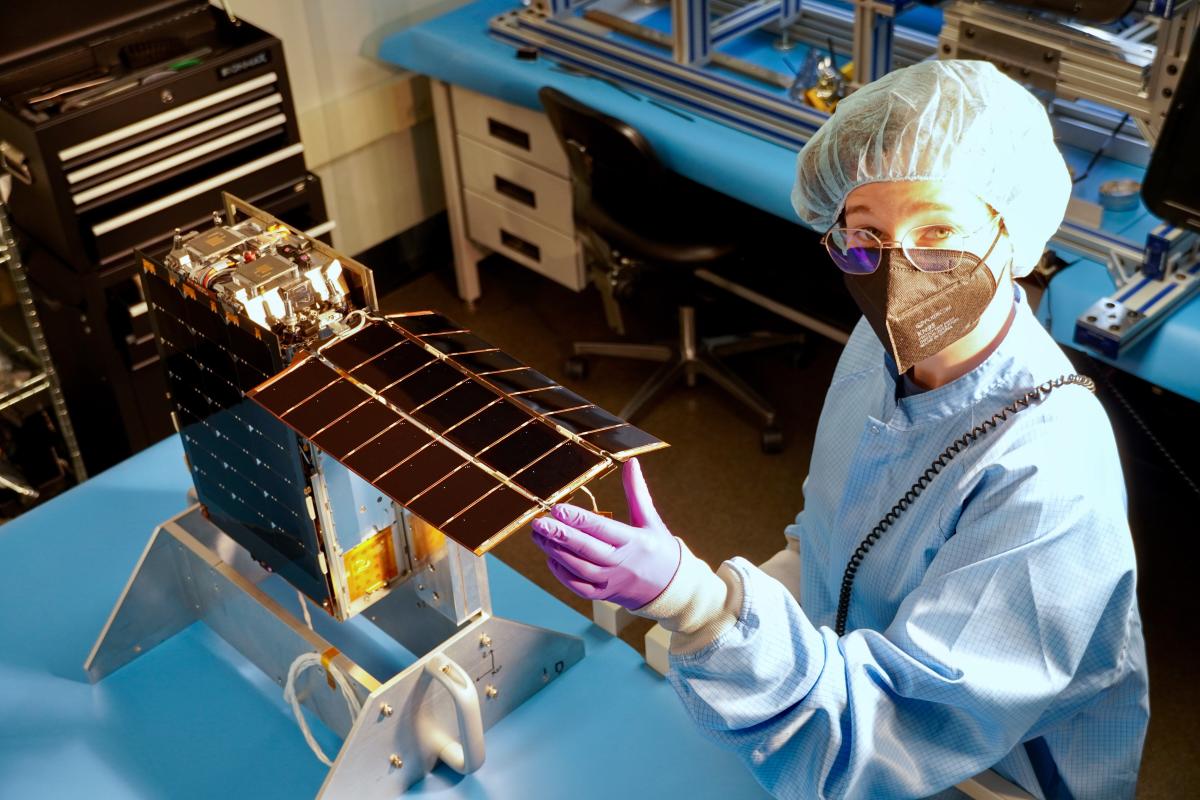
Celeste Smith helped integrate Lunar Flashlight as a Georgia Tech student. She worked on JPL’s team after the spacecraft launched. (Photo credit: Nathan Cheek)
Despite what amounted to thousands of hours of troubleshooting — and nearly as many ideas — the team never created enough force to achieve orbit within the earth-moon system. In May, five months after liftoff, NASA called off their participation in the mission when it became clear there was no chance to reach the moon.
The news was disappointing for Celeste Smith, who had a unique perspective while leading JPL’s propulsion team troubleshooting the anomalies. She worked on the prop system’s electronics and integration while earning her master’s degree from Georgia Tech.
"It was nice to have seen the process from both sides because I knew who to talk to about different things,” Smith said. “I had a view into how Tech did things and how JPL did things, so I could effectively bridge the gap between them. It was a lot of waking up at odd hours and putting other things on hold so we could try to figure out how to get to the moon. It was an experience I will remember and cherish for the rest of my life.”
A Successful Mission
Although Lunar Flashlight’s intent was to hunt for frozen water hidden in lunar craters, NASA didn’t classify it as a science mission. It was billed as a technology demonstration mission.
Those new technologies included the propulsion system and a “green” propellant that’s less toxic and safer than hydrazine, which is traditionally used by spacecraft.
“This was the first time this kind of system, which was built here on campus, was used in space. Everything worked perfectly in our tests, but space conditions are incredibly different,” said Glenn Lightsey, an AE School professor who advised the students. “It’s normal that things don’t always work in our field. The process of innovation and spirit is learning and fixing it. And failure only happens when you stop trying,” Lightsey added.
Along the way, the aerospace engineering undergraduate and graduate students found themselves on equal footing with JPL professionals as they suggested solutions and tactics.
“The student operations team at Georgia Tech, with assistance from JPL and NASA’s Marshall Space Flight Center, rose to the challenge and came up with an incredible array of inventive techniques to utilize what tiny amount of thrust Lunar Flashlight’s propulsion system could deliver,” said John Baker, Lunar Flashlight project manager at JPL.
Each of the students has landed a space-related internship or job because of their experience in mission control. Together, the team found new ways to use just one thruster on a novel propulsion system. They discovered novel ways to rotate the crippled spacecraft to compensate for momentum drift.
“We’re all disappointed that we didn’t identify water ice at the lunar south pole, but that wasn’t a condition for a successful mission,” said Jud Ready, an adjunct professor in the School of Materials Science and Engineering and principal research engineer in the Georgia Tech Research Institute. “Our mission was to demonstrate several new technologies in space. We knew it would be a great challenge for everything to work as planned, but that’s why we did it, and we achieved all the primary technology demonstration objectives.”

(text and background only visible when logged in)
Next: Using Lunar Flashlight in New Ways
Although the mission is over from NASA’s perspective, and the propulsion system can’t steer the spacecraft, nearly everything else on Lunar Flashlight is, as they say in the space world, “nominal.” The CubeSat is currently orbiting the sun slightly ahead of the Earth on a trajectory that will bring it back to the vicinity of the planet in 2037.
A team of undergraduate students communicates with the CubeSat using NASA’s Deep Space Network and will continue demonstrating operations of the satellite’s lasers, detectors, radios, and imaging devices for as long as they continue to operate.
They’ve also turned the spacecraft’s star tracker into a camera to take photos of Earth and the moon to demonstrate various forms of classical optical navigation. Additionally, images are being collected of the first six planets in the solar system (Mercury to Saturn) to demonstrate navigation by celestial triangulation. Other plans are to open the spacecraft’s fourth solar array to generate more electricity and shoot lasers at Earth to test the sensitivity of existing telescopes.
“This is the only team of undergraduate students ever put in charge of operating an interplanetary spacecraft,” Lightsey said. “There was a question at the beginning of this process: could a university do all of this with a student operated mission control. Georgia Tech answered tremendously in the affirmative, and our students have paved the way for others, and for other possibilities.”
The grad student who has spent the most time in the middle of everything is Ph.D. student Mason Starr, the former Georgia Tech mission operations lead in charge during the JPL mission. In the days following NASA’s decision to end the mission, Starr remembered something JPL insisted upon prior to launch: When managing inevitable risks, take the path of least regret.
“Now that the original mission is over, there’s nothing that makes me say, ‘What if we would have tried something else.’ We tried everything. And so, I have no regrets.” Starr said. “The learning curve was steep, but every problem we faced became an opportunity to expand our knowledge and refine our skills.”

A picture of Earth, taken by Lunar Flashlight using Georgia Tech’s camera.
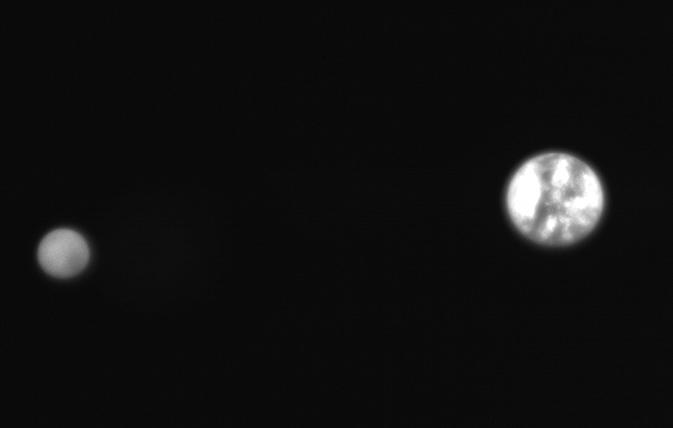
A photo taken by Lunar Flashlight of the moon and Earth.
(text and background only visible when logged in)
(text and background only visible when logged in)
Related Content
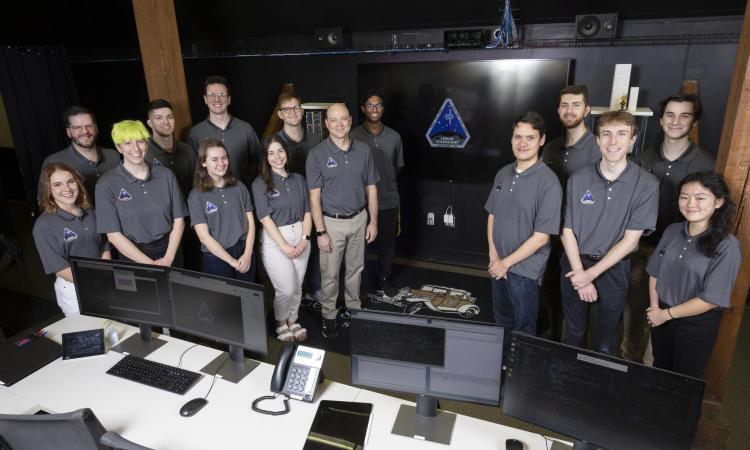
A Mission to the Moon
After years of preparation, a team of students will shepherd the Lunar Flashlight spacecraft around the moon in search of frozen water.
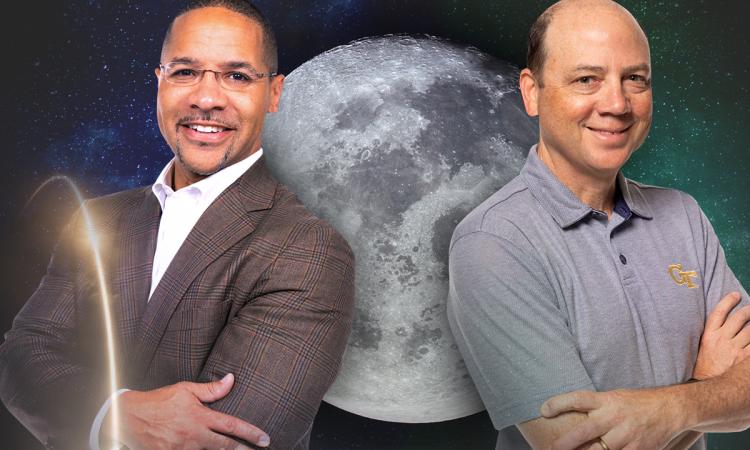
Why the Moon Matters
Georgia Tech experts discuss why humans are returning to the lunar surface, what we might find there, and why the moon matters for the future of space exploration.
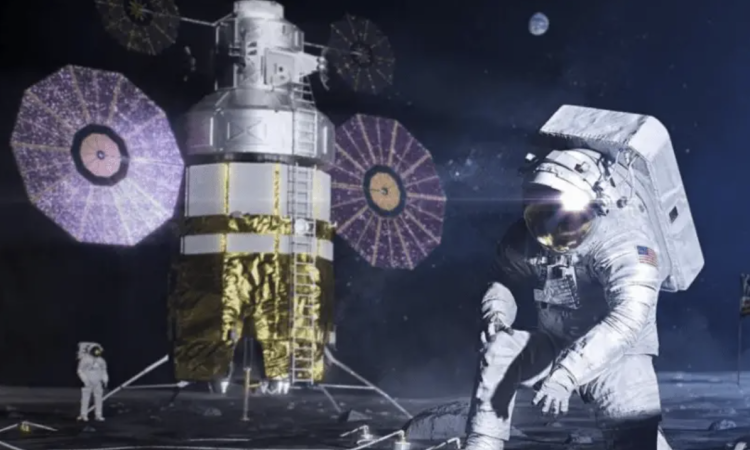
The Future of Space Exploration
AE School faculty weigh in on what’s next in space exploration?
(text and background only visible when logged in)